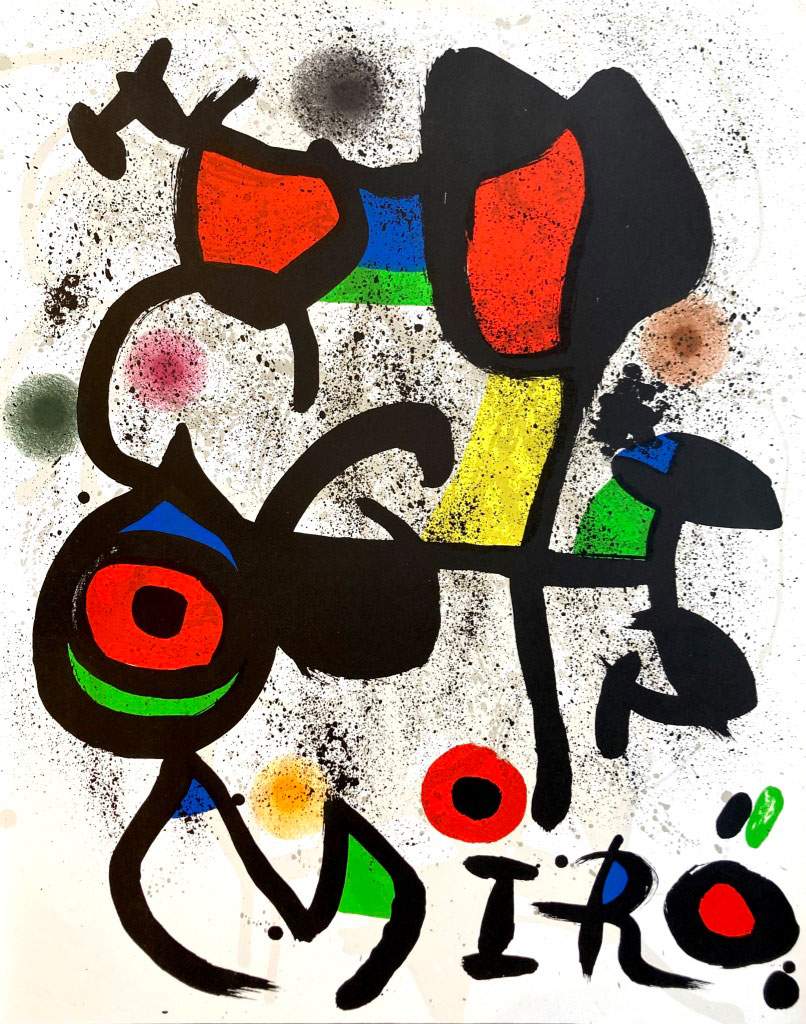Opening April 23, 2021 in Turin, Italy, at the Elena Salamon Arte Moderna art gallery, is an exhibition entitled This I Could Have Done It Too - From Abstract to Informal Art, open to the public until May 29, 2021. The exhibition will feature eighty-five original lithographs created by thirty-two masters of international abstractionism. Eight from Italy(Carla Accardi, Getullio Alviani, Giuseppe Capogrossi, Piero Dorazio, Bruno Munari, Giuseppe Santomaso, Gino Severini, and Emilio Vedova), fourteen from Europe (Arman , Max Bill, Sonia Delaunay, Jean Dubuffet, Maurice Estève, Hans Hartung, Asger Jorn, Henri Matisse, Joan Miró, Jo Niemeyer, Antoni Tàpies, Victor Vasarely, Jacques Villon, and Friedrich Vordemberge-Gildewart), one from Israel (Yaacov Agam), seven from America (Josef Albers, Alexander Calder, Sam Francis, Paul Jenkins, John Levee, and Walasse Ting), and two from Russia (Kandinsky and Serge Poliakoff).
“This one I could have done as well. Why is it that when faced with an abstract work we are often inclined to say that we could easily have made it ourselves? The exhibition will show that that is a wrong thought in itself,” says Elena Salamon, head of the art gallery of the same name. “The exhibition will also provide an opportunity to explain that abstract art is not the exclusive preserve of experts, those select few who understand and appreciate it. It is not. On the contrary, it is precisely a concept that this artistic current has tried to dismantle. Each of us in order to accept and understand it must let go, abandon old patterns and trust instinct more than reason, emotions more than eyes. Only in this way will it be possible to be captured by the images and somehow become their creator.”
A glimpse of the various interpretations ofAbstractionism will be found in the exhibition.
Each current of that period attempted to make its own contribution to a new need for art making. For example, the early twentieth-century avant-gardes, which originated mainly in France, such as Symbolism and the Fauves, began to develop the image not so much through its lines but through the free and unprejudiced use of color, recovering some concepts from distant and primitive cultures. Eventually, all movements went toward two basic poles of abstract art: the lyrical and spiritualistic of Kandinsky and the geometric and rationalist headed by Malevic in Russia and Mondrian in the Netherlands.
“Some scientists have highlighted how we observers, by interpreting what we see in a personal way, contribute to ’creating’ the work of art: each observer, in fact, responds to the ambiguity of the work based on his or her own experiences,” Elena Salamon points out. “Our brain, then, takes the work and completes it in its own way to make sense of what we see. Why do we like the works of Pollock, Mondrian or Rothko? Because they offer a particular perceptual experience that stimulates our creativity.”
For info: www.elenasalamon.com/pages/catalogo-primavera-2021
Hours: Tuesdays, Wednesdays and Fridays from 3 to 7 p.m.; Thursdays and Saturdays from 10:30 a.m. to 7 p.m. For appointment call 3398447653.
Image: Joan Miró, Bronzes (1972)
 |
| Masters of international Abstractionism on display in Turin, from Kandinsky to Miró |
Warning: the translation into English of the original Italian article was created using automatic tools. We undertake to review all articles, but we do not guarantee the total absence of inaccuracies in the translation due to the program. You can find the original by clicking on the ITA button. If you find any mistake,please contact us.